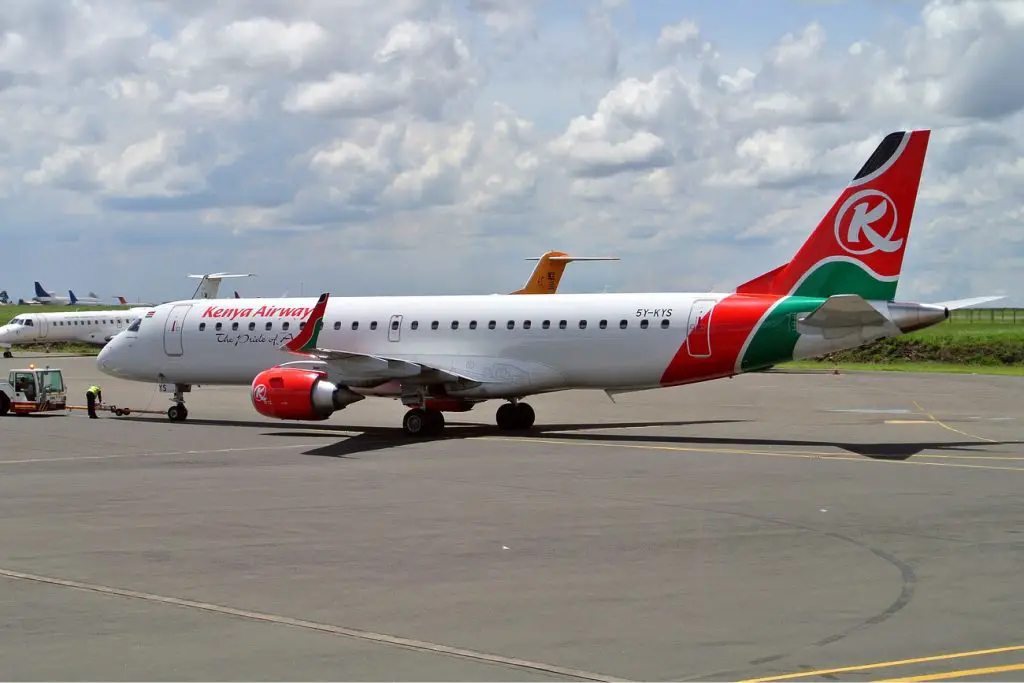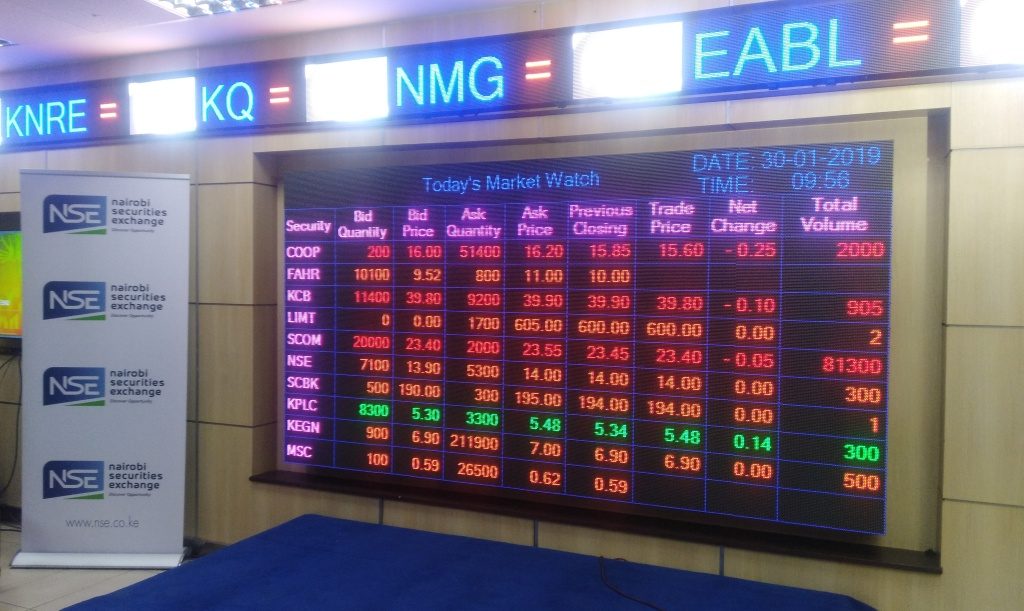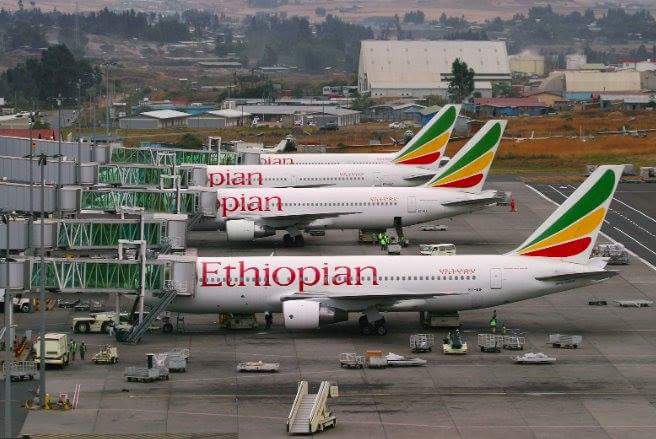- Total operating costs during the year under review increased to USD930.1 million (Ksh122.4 billion) from USD585.3 million (Ksh77.02 billion).
- This ate into gains made in revenue as total income grew to USD887.5 million (Ksh116.8 billion), from USD533.4 million (Ksh70.2 billion).
- African carriers are expected to post a loss of USD638 million in 2022, narrowing to a loss of USD213 million in 2023, according to IATA.
Kenya’s flag carrier-Kenya Airways has posted the worst loss ever as high operating costs wiped out gains made in revenues last year, as the aviation industry slowly picked from the impact of the Covid-19 pandemic.
The carrier’s has reported a USD290.8 million (Ksh38.26 billion) loss for the year ended December 2022, which is a dip from USD120.6 million (Ksh15.87 billion) posted in a similar period in 2021.
Total operating costs during the year under review increased to USD930.1 million (Ksh122.4 billion) from USD585.3 million (Ksh77.02 billion).
This ate into gains made in revenue as total income grew to USD887.5 million (Ksh116.8 billion), from USD533.4 million (Ksh70.2 billion).
Industry overview
During the year 2022, global air passenger traffic growth gained momentum as governments lifted Covid-19 travel restrictions. Global passenger traffic grew from 41.7 per cent of 2019 levels in 2021 to 68.5 per cent in 2022.
As a result, passenger load factors for 2022 were only 3.9 percentage points below the load factors achieved before the pandemic in 2019.
However, according to IATA, Africa’s passenger traffic was weaker than in other regions due to the impact of the pandemic on developing economies.
Consequently, passenger numbers to and from the continent will recover slower than in other regions surpassing pre-crisis levels only in 2025.
Improved prospects for 2022, in the global aviation industry, stem largely from strengthened yields and strong cost control in the face of rising fuel prices.
Passenger yields are expected to grow by 8.4 per cent (up from the 5.6% anticipated in June). Propelled by that strength, passenger revenues are expected to grow to USD438 billion (up from USD239 billion in 2021).
Air cargo revenues played a key role in cutting losses with revenues expected to reach USD201.4 billion. That is an improvement compared with the June forecast, largely unchanged from 2021, and more than double the $100.8 billion earned in 2019.
Overall revenues are expected to grow by 43.6 per cent compared to 2021, reaching an estimated USD727 billion.
Most other factors evolved in a negative manner following a downgrade of GDP growth expectations (from 3.4% in June to 2.9%), and delays in removing Covid-19 restrictions in several markets, particularly China.
IATA’s June 2022 forecast anticipated that passenger traffic would reach 82.4 per cent of pre-crisis levels in 2022, but it now appears that the industry demand recovery will reach 70.6 per cent of pre-crisis levels.
Cargo, on the other hand, was anticipated to exceed 2019 levels by 11.7 per cent, but that is now more likely be moderated to 98.4 per cent of 2019 levels, it notes.
Economy impact
The global economy continues to endure the consequences caused by the war between Russia and Ukraine one year on.
This war generated the biggest energy price shock since the 1970s, along with more inflation and economic uncertainties.
The aviation sector which was still recovering from the Covid-19 pandemic when the war broke out was not spared either. Efforts to bounce back have been curtailed by air restrictions and sanctions imposed both by and against Russia.
This led to rerouting of flights or cancellations, higher ticket prices, increase in fuel costs among other issues.
Foreign currency impact
Like many countries, Kenya is experiencing a tight period of forex demand coupled with reduced liquidity in the interbank foreign exchange market and a local currency depreciation, the Nairobi Securities Exchange (NSE) listed firm notes in its financials.
Most of Kenya Airways’ financial transactions are in major foreign currencies. For that reason, the devaluation of the Kenya Shilling negatively impacts the airline’s financials, chairman Michael Joseph says.
“The airline further recorded forex losses mainly because of the novation of guaranteed dollar loans as part of the ongoing financial restructuring program of the airline. This loss alone amounts to Ksh18 billion (USD136.7 million),” Joseph notes.
Capacity deployment
During the year under review, KQ’s capacity deployed measured in Available Seat Kilometres (ASKs) increased by 75 per cent , closing at 10,303 million, compared to 5,900 million reported in 2021.
This remains 38 per cent lower than pre- pandemic levels.
The cabin factor levels are however close to the pre-pandemic levels, with the airline achieving a cabin factor of 74.5 per cent in 202, 2 compared to 60.8 per cent in the previous period and 75 per cent in 2019.
The Group uplifted a total of 3.7 million passengers during the year, a 68 per cent increase compared to the prior year but 28 per cent lower than in 2019.
The cargo business uplift increased by 3.5 per cent year on year to 65,955 tonnes.
The Group costs which increase of 59 percent ( in total operating costs) for the year, with direct operating costs increasing by 94 per cent, was mainly due to increased operations as well as huge global fuel prices increases throughout the year, management said on Monday.
Fuel costs increased by 160 per cent year-on-year.
Fuel alone accounts for 53 per cent of direct operating costs. The fleet ownership costs were six per ent higher than previous year caused by the provision for early aircraft returns.
Overheads increased by 30 per cent due to foreign currency losses driven by the weakening of the Kenya Shilling against major world currencies.
The financing costs had a one-time adverse effect of USD136.7 million on the financials due to a release of foreign currency hedges on borrowings arising from loan novation.
Without the significant events of 2022, which included an increase of fuel cost due the spike in fuel prices, the financing costs referred to above and the impact of the devaluation of the Kenya Shilling against major world currencies, the airline would have achieved a break-even profit before tax and reported a profit of USD98.8 million (Kshs 13 billion) at operating level, management says.
“This means that the airline is a viable business and that the initiatives put in place by management are bearing fruit,” Joseph said.
“Overall, Kenya Airways Management and staff made tremendous efforts in 2022 to improve both our service levels and revenues and focused on cost reductions by undertaking key initiatives. The Board is extremely proud of the results and sustained efforts by the whole KQ team which resulted in a significant improvement in the operating performance, and augers well for the future profitability of the airline,” he added.
Looking ahead
In the past three years, aviation has had its fair share of turbulence. Air traffic demand surged during 2022.
The International Civil Aviation Organization (ICAO) forecasts that air passenger demand in 2023 will rapidly recover to pre- pandemic levels on most routes by the first quarter and that growth of three per cent on estimate on 2019 figures will be achieved by year end.
Looking further ahead, airlines are expected to return to operating profitability in the last quarter of 2023, following three consecutive years of losses.
Hence, the results of the restructuring plan as well as the transformation initiatives undertaken by the management and staff of Kenya Airways are bearing fruit, Joseph said.
“The Board and Management continue to remain focused and committed towards undertaking several key strategic initiatives to help the company become profitable by 2024,” he added.
African carriers are expected to post a loss of USD638 million in 2022, narrowing to a loss of USD213 million in 2023, according to IATA.
Passenger demand growth of 27.4 per cent is expected to outpace capacity growth of 21.9 per cent.
Over the year, the region is expected to serve 86.3 per cent of pre-crisis demand levels with 83.9 per cent of pre-crisis capacity.
“Africa is particularly exposed to macro-economic headwinds which have increased the vulnerability of several economies and rendered connectivity more complex,” IATA notes in its report.
Globally in 2023, the airline industry is expected to tip into profitability.
Airlines are anticipated to earn a global net profit of USD4.7 billion on revenues of USD779 billion (0.6% net margin).
This expected improvement comes despite growing economic uncertainties as global GDP growth slows to 1.3 per cent (from 2.9% in 2022).
Despite the economic uncertainties, there are plenty of reasons to be optimistic about 2023.
Lower oil price inflation and continuing pent-up demand should help to keep costs in check as the strong growth trend continues, IATA says.
“At the same time, with such thin margins, even an insignificant shift in any one of these variables has the potential to shift the balance into negative territory. Vigilance and flexibility will be key,” said Willie Walsh, IATA’s Director General.











